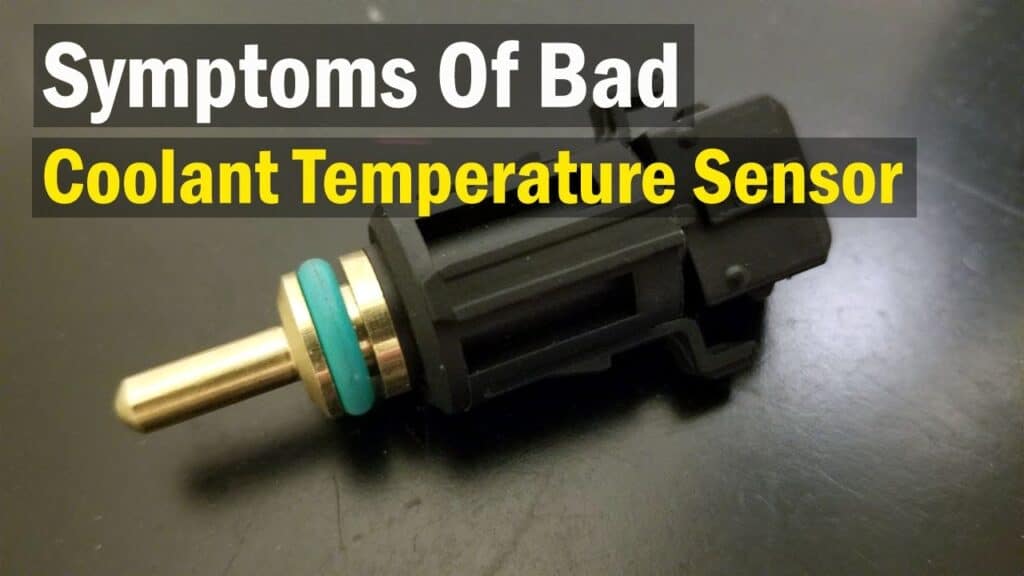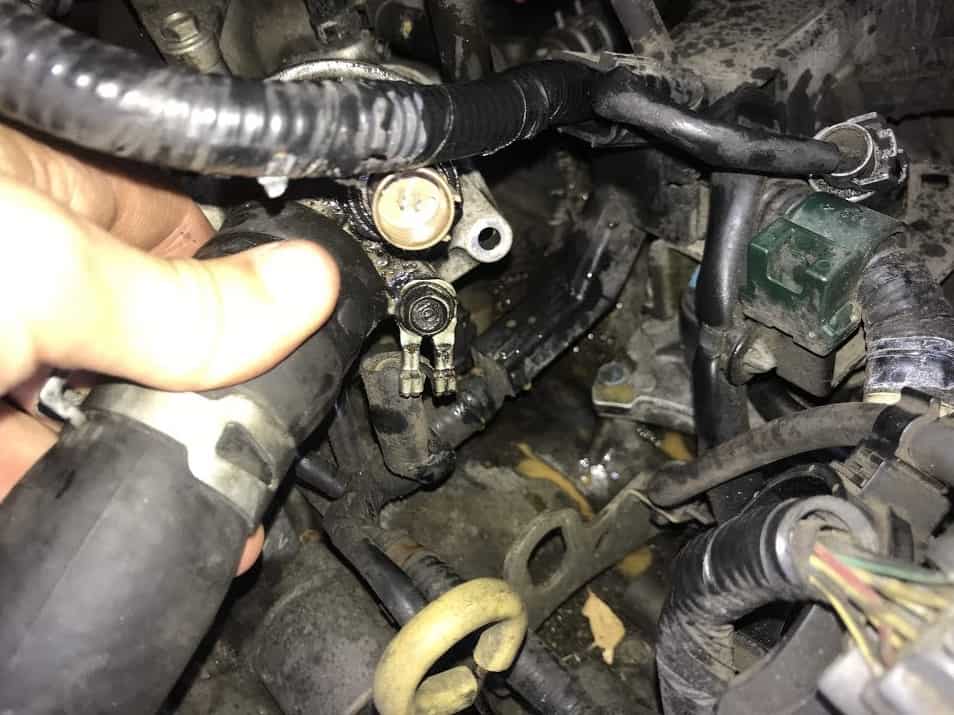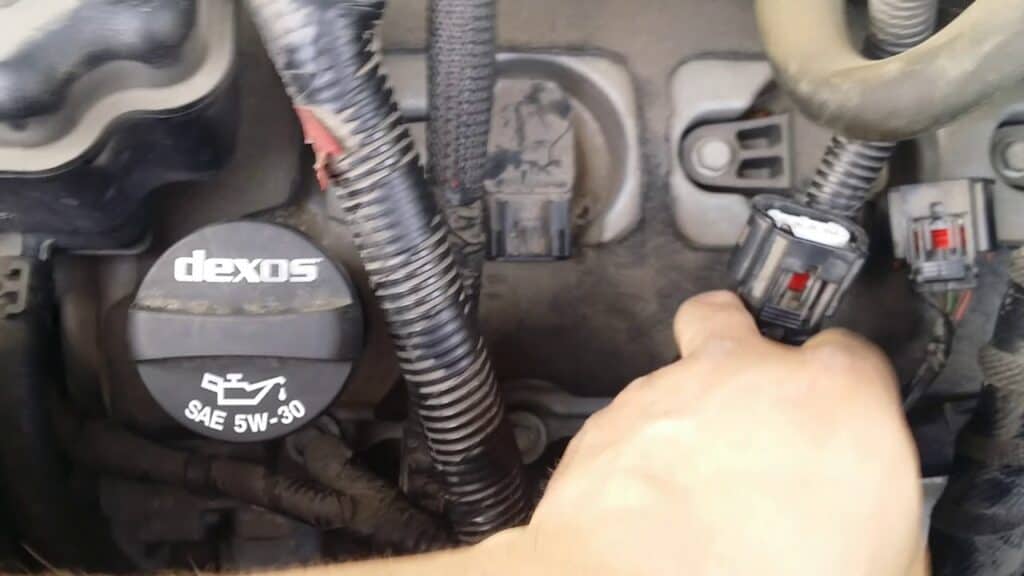Coolant temperature sensors in vehicles record the temperature of the heat inside the car engine and sense any temperature fluctuations. Once the CT sensor is broken and fails to take the correct amount of heat temperature it results in damages to the vehicle parts such as, the engine, and car parts, the fuel component, etc.
Several reasons can result in poor coolant temperature sensors, such as dead car batteries, engine overheating, and blown-out coolant temperature sensors. The article below shows the leading causes of a bad coolant temperature sensor. Also, the information describes a step by step guide on how to remove the CT sensor in your vehicle.
Signs and symptoms of failing CT sensor

While serving your vehicle frequently, issues are identified, such as a failing coolant temperature sensor that requires immediate troubleshooting to keep the car functioning normally. The following signs and symptoms will enable you to know when your vehicle’s coolant temperature sensor fails.
- Inaccurate temperature measurements
Sometimes, the coolant temperature sensor may start recording high or low temperatures than usual. If you notice the temperature recordings are inaccurate, consider consulting a professional mechanic to help you examine the vehicle coolant temperature sensor rather than inspecting it on your own.
2. Car engines produce less heat
Failing the coolant temperature sensor results in sending incorrect temperature readings that can increase engine heat production. For example, the coolant temperature sensor may send low-temperature recordings that your car engine is functioning at low temperature even when the engine works perfectly.
3. Production of unwanted smoke
If the coolant temperature sensor black smoke is produced after the excess fuel, combust since too much fuel in the combustion chamber remains unburned. Once you see back smoke being made from the exhaust, contact a licensed nearby mechanic to help you repair the failing temperature sensor.
4. The car engine light switches on
Apart from engine overheating, the failing coolant temperature sensor may send false signals to the car engine disrupting the car engine light and turning on the car light engine with the wrong sensor command or indication. If you see a car engine light on in an unusual way, check the coolant temperature sensor to see if it is functioning as required.
5. Increased fuel consumption
Increased fuel consumption is the first sign which shows that your car coolant temperature sensor is failing. Failing coolant temperature sensor records wrong temperatures and sends the false temperature recordings interfering with the amount of fuel used up to a specific time.
Further, a bad coolant temperature sensor can send incorrect signals, such as the engine being too cold when overheating and consuming a lot of fuel, increasing fuel economy. Also, false signals may prevent the car engine from generally functioning until the sensor is correctly fixed.
6. The car engine fails to start
Sometimes, a failing coolant temperature sensor may send false temperature recordings that the engine is cold and consumes little fuel while the car engine has consumed all fuel present in reality. All fuel consumption in most cases fails when the engine car starts.
Steps recommended for removing and replacing CT sensor
Step 1: Locate the best parking place to park your car for coolant temperature sensor replacement

First, look for any effective place for parking your car. After parking the car, leave the engine to sit for a couple of minutes until the car engine cools down completely before proceeding to the next step.
Ensure you have all the materials required to remove and replace the coolant temperature sensor, such as a new screwdriver, wrench, new coolant temperature sensor, and an engine coolant. Leaving the vehicle engine to cool eases pressure in the cooling system. Therefore, before proceeding to the next steps, ensure you go to the engine to sit for a couple of minutes until it completely cools down.
Step 2: Find the location of the CT sensor
First, find the location of the CT sensor by looking near the car radiator. After finding the location, drain all coolant from the radiator valve carefully.
Step 3: Disconnect the CT sensor

First, find the CT sensor location, and in most vehicle models, it is located in front of the vehicle near the vehicle engine. Using a screwdriver and a wrench, unscrew all nuts and bolts to disconnect the CT sensor but if the nuts have accumulated a lot of rust, consider using another tool such as a mini-hacksaw and nut cutter.
While disconnecting the CT sensor, be more careful to avoid damaging other vehicle parts. After unscrewing, remove the CT sensor, and before replacing the new CT sensor, and bring the new coolant temperature sensor.
Step4: Reinstall the new coolant temperature sensor
Reinstalling a new coolant temperature sensor requires a screwdriver, a wrench, nuts, and a new coolant temperature sensor. Reinstall the new coolant temperature and screw the nuts using the screwdriver to hold the CT sensor in place. While screwing, avoid using too much pressure and tightening the sensor too much to avoid breaking the sensor or any other vehicle components such as the vehicle cylinder and cylinder head.
Step 5: Replace the sensor wires
If the wires are damaged, cut them off using a wire cutter or any material recommended by a professional mechanic. Strip the new cables using a wire stripper and connect the wires correctly with the terminals fitting perfectly.
Step 6: Refill the coolant in the cooling system
After safely reinstalling both the new coolant temperature sensor and connecting the wires, refill the cooling system with the recommended coolant. Reinstall all car components that are removed while removing coolant temperature sensors such as radiator caps.
Step 7: Turn on the vehicle engine and test if the newly installed coolant temperature sensor is functioning correctly
Start the vehicle engine and leave it for some time to heat up. Check the CT sensor to see if it is functioning correctly. If it is not working as expected, consider repeating the process above, but consult a professional mechanic if the problem persists.
Conclusion
Your vehicle has an engine coolant temperature sensor that records temperature changes. Once it fails to function, you may notice the above signs, such as producing a pungent smell. Luckily, the article above will help you fix such problems before contacting a professional mechanic.
Finally, it is advisable to handle all the vehicle components carefully to prevent any damages. Moreover, it is advisable to inspect your vehicle regularly. Finally, ensure you service your car at least twice per year.
Watch this video for Coolant Temperature Sensor Replacement guides;
